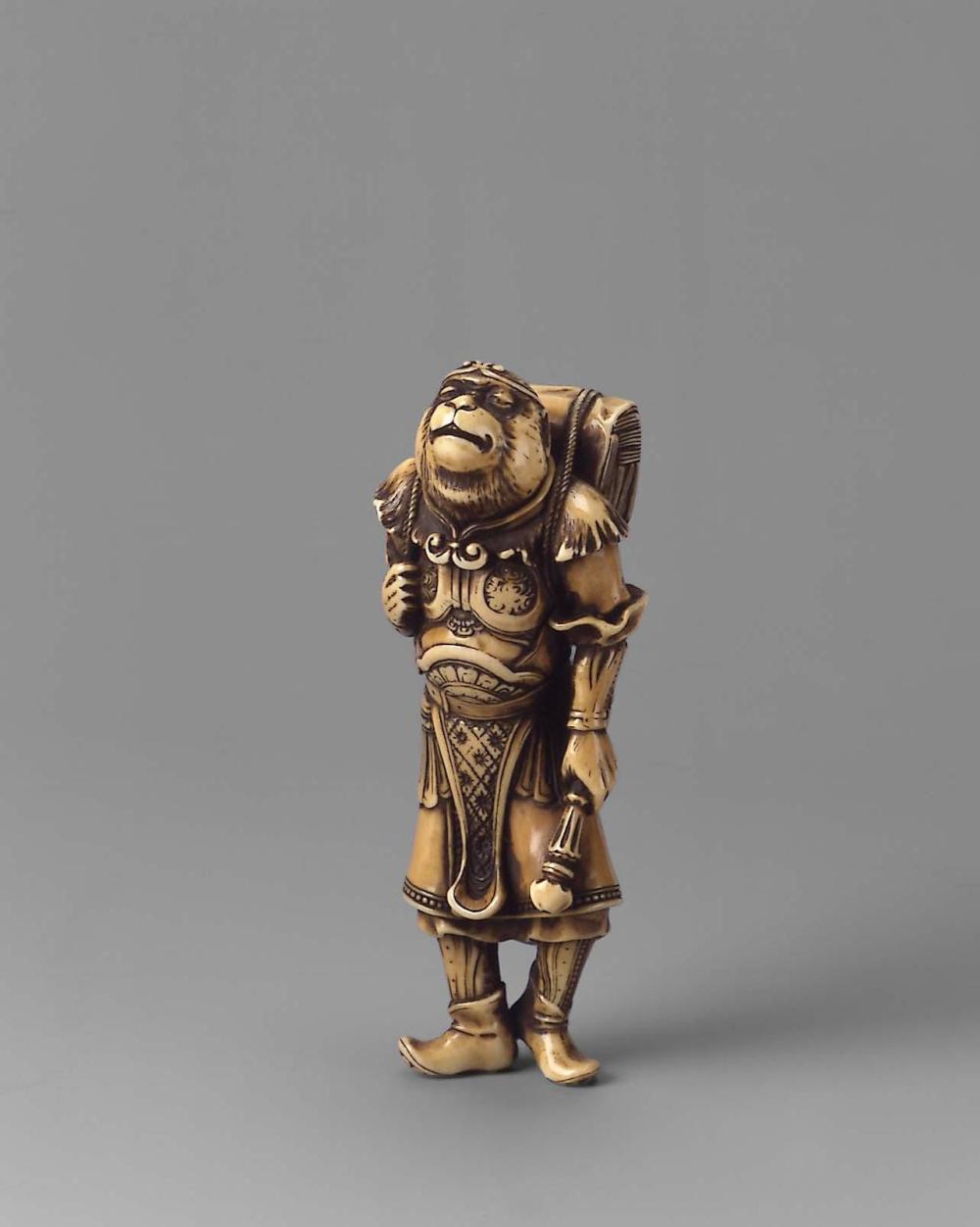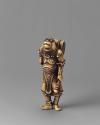Advanced Search
孫悟空
Son Gokû
孫悟空
Yûsô (Japanese)
Japanese
Meiji era
late 19th century
Medium/Technique
Heavily stained ivory
Dimensions
9.7 x 3.6 x 3.8 cm (3 13/16 x 1 7/16 x 1 1/2 in.)
Credit Line
Gift of Dr. Ernest G. Stillman
Accession Number47.510
CollectionsAsia
ClassificationsNetsuke
The monkey Songokû (in Chinese, Sun Wukong, translated by the British sinologue Arthur Waley as "aware of vacuity"), is on of the heroes of the novel Saiyûki (in Chinese Xiyou Ji, "The Journey to the West"). Starting out as a troublesome magician with the power to transform himself into seventy-two different shapes, he quickly submits ot the will of the Buddha and becomes the faithful companion of the Chinese pilgrim Gensô Sanzô (in Chinese Xuanzang Sanzang). Songokû accompanies the pilgrim on an epic journey to India, during which they endure eighty-one adventures and eventually succeed in bringing back the 5,084 volumes of the Buddhist scriptural canon, some of which can be seen here on the monkey's back. Little is known about Yûsô, but his signature is recorded on a sashi netsuke in the style of Kokusai (see "Netsuke: Fantasy and Reality in Japanese Miniature Sculpture" cat. 101), suggesting that he probably worked in Tokyo toward the end of the nineteenth century.
Catalogue Raisonné
Earle, Netsuke (MFA, 2001), #126
Signed
Yûsô tô (carved by Yusô)
遊藻刀
遊藻刀
ProvenanceGiven by Dr. Ernest Goodrich Stillman in 1947.




